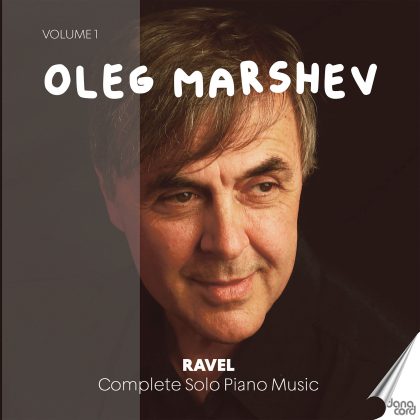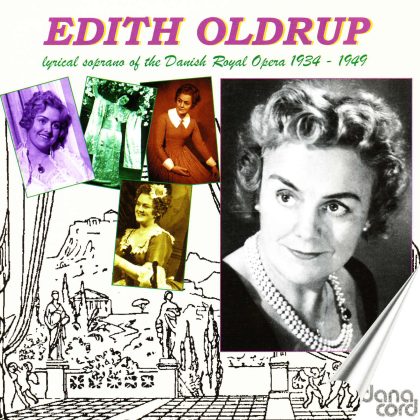Sonata in G Minor
1. Allegro non troppo
2. SONG WITHOUT WORDS: Allegretto grazioso
3. MEMORIES OF YORE: Tempo di menuetto moderato
4. Allegro grazioso – Allegro assai
Sonatina in G Major
5. Allegro non troppo
6.ROMANZA: Andantino
7. RONDO-SCHERZO: Allegro assai
Piano Piece in A Major: “In Springtime”
8. Presto
Sonata in F Major
9. Allegro non troppo
10. Andante sostenuto, con larghezza
11. INTERMEZZO: Allegretto moderato (märchenartig)
12. FINALE: Allegro commodo
Piano Pieces from an earlier and a more recent Time, Op. 74
13. G Minor: Allegro moderato, con passione – moderato
14. G Major: Allegro energico, non vivace
15. B-flat Major: Andantino sostenuto
16. D Minor: Allegretto moderato
17. E-flat Major: Allegro moderato e cantabile
The composer Johan Emilius Hartmann was a member of a family of musicians and composers which for over 200 years left their distinctive mark on Danish music. His paternal grandfather, Johann Hartmann (1726-93) arrived in Copenhagen in 1766 from Germany. He was engaged as a violinist in what was later to become The Royal Danish Orchestra in 1766 and was rapidly promoted to being the leader of the orchestra. As a composer he achieved great success with the music for poet and dramatist Johannes Ewald’s “Balders Død” and “Fiskerne”. His sons, Johan Ernst and August Wilhelm, both pursued a musical career, Johan Ernst as the cantor of Roskilde Cathedral and August Wilhelm as the organist of the Garrison Church in Copenhagen. In 1805 he became the father of J.P.E. Hartmann. In the same year Hans Christian Andersen and August Bournonville were also born, the latter to become Denmark’s most famous creator of the Danish Ballet. Both of these men became friends of Hartmann and he enjoyed a fruitful collaboration with both of them. His long life – 95 years – under four kings, born while Haydn was still alive and not dying until both George Gershwin and Duke Ellington were born, meant that he more than anybody else influenced the development of Danish music in the romantic period.
The family’s later generation also left their mark in music. J.P.E. Hartmann’s son, Emil (1836-98), was a respected composer whose works today are once again claiming interest, and his great-grandchild was the composer Niels Viggo Bentzon who ended up being one of the 20th century’s most talkedabout Danish composers. Others in the family have also made an impression on the music life of Denmark. So here we are talking about a Danish musical dynasty. That Hartmann’s daughter married composer Niels W. Gade was also to be significant for the development of music in the 19th century.
During Hartmann’s childhood and youth, historical events were not favourable for the Kingdom of Denmark. One catastrophe led to another: The Bombardment of Copenhagen in 1807 and the loss of the Danish fleet, the national bankruptcy in 1813 and the loss of Norway in 1814 were events which were of immense significance for Danish literature, music and culture in the dawning of romanticism. Attempts were made to repress the present with reminiscences of better times in antiquity and the early Middle Ages. Legends and myths came to life in the dramas of the poet Adam Oehlenschlæger and others. Hartmann was also influenced by this. His most well-known contribution to the genre is the music which made Oehlenschlæger’s “Guldhornene” (The Gold Horns) from 1832 into a melodrama which found favour well into the 20th century and of which several gramophone recordings were made. The most well-known are the interpretations of Poul Reumert and Adam Poulsen, both actors at The Royal Theatre. In this work we meet for the first time the atmosphere which became known as “The Nordic Tone”. This can be described as serious, slightly sombre without actually being gloomy, often rhythmically divergent from the expected, and with a strain of folkmusic. It has almost become Hartmann’s name for posterity. We encounter it not only in the music for Oehlenschlæger’s Nordic tragedies such as “Hakon Jarl” and in the music for Bournonville’s ballets “Valkyrien” and “Trymskviden”, but also in symphonies and in many of the large number of occasional works he wrote during his long life, which today have been forgotten, precisely because they were – occasional works. In one of the most loved and still performed Bournonville ballets, “Et Folkesagn” we see the collaboration between Hartmann and his son-in-law, Gade, who wrote the music for the 1st and 3rd acts, while Hartmann provided the music for the 2nd act.
RELEASE DATE: March 2022
CATALOGUE NUMBER: DACOCD 907
EAN: 5709499907009




